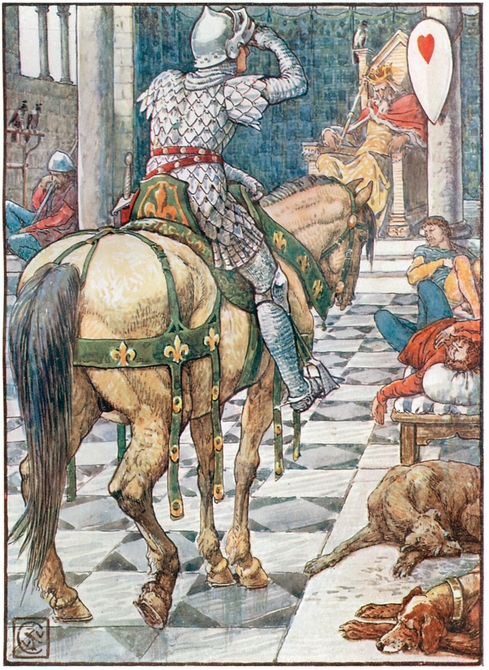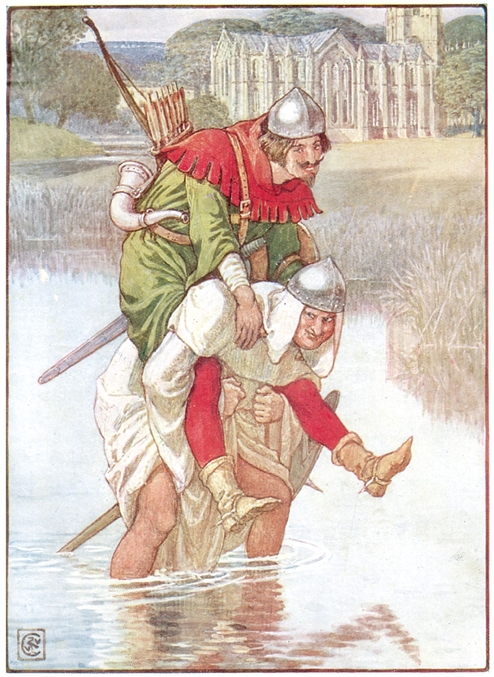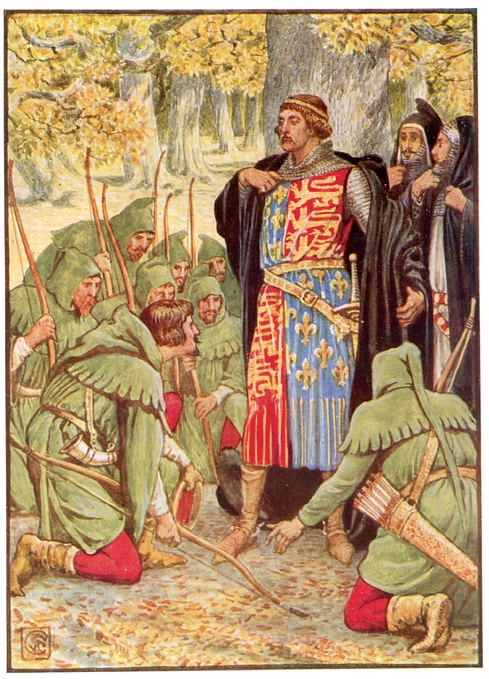THE LATER YEARS
After decades of working with the earliest forms of color printing, from the engraved woodblocks of the toybooks to the six-color lithographs created for Hawthorne’s Wonder Book, Walter Crane turned to projects that were produced using “photographic color half-tone printing.” This method of breaking down color images is very similar to how almost all color imagery is printed today. This process enabled Crane to prepare illustrations in a more direct way than ever before, without concern for how an image would transfer, or how it would be interpreted by an engraver. The result is an image that is much more concerned with its own composition and depth, and its internal cohesiveness, than its relationship to the page design, an approach that Crane had championed forty years earlier. These later works did not indulge Crane’s skills as a designer but as an illustrator, in a manner similar to many books of the day—simple and direct in their text, with color plates providing the sole visual element.
Crane’s political views influenced his work until his death in March 1915. He interpreted socialist themes in his paintings and devoted a fair amount of time to providing political magazines with cover designs, illustrations, and cartoons.

Young Owen Appeals to the King
King Arthur’s Knights, 1911

Sir Geraint and the Lady Enid in the deserted Roman Town
King Arthur’s Knights, 1911

Perceval obtains the shield of the beating heart
King Arthur’s Knights, 1911

Sir Galahad is brought to the court of King Arthur
King Arthur’s Knights, 1911

Sir Lancelot forbids Sir Bors to slay the King
King Arthur’s Knights, 1911

Robin Hood and Little John
Robin Hood and the Men of the Greenwood, 1912

Robin Hood as the Potter
Robin Hood and the Men of the Greenwood, 1912

Robin Hood and Father Tuck
Robin Hood and the Men of the Greenwood, 1912

Lyttel John and the Knyghte
Robin Hood and the Men of the Greenwood, 1912

Robin Hood and his men kneel to the King
Robin Hood and the Men of the Greenwood, 1912

The King joins the hands of Robin Hood and Maid Marian
Robin Hood and the Men of the Greenwood, 1912